Barcode Country of Origin List & Steps to Register a Barcode Number
Barcodes have become ubiquitous in the modern era, appearing on everything from consumer electronics to groceries.
The barcode country of origin list is an important resource for consumers and businesses looking to gain insight into where their products are manufactured or produced.
This list has been created to help users understand which prefixes correspond to which countries or regions.
With that in mind, this post will provide you with information about barcode prefixes and the list of barcodes and products.
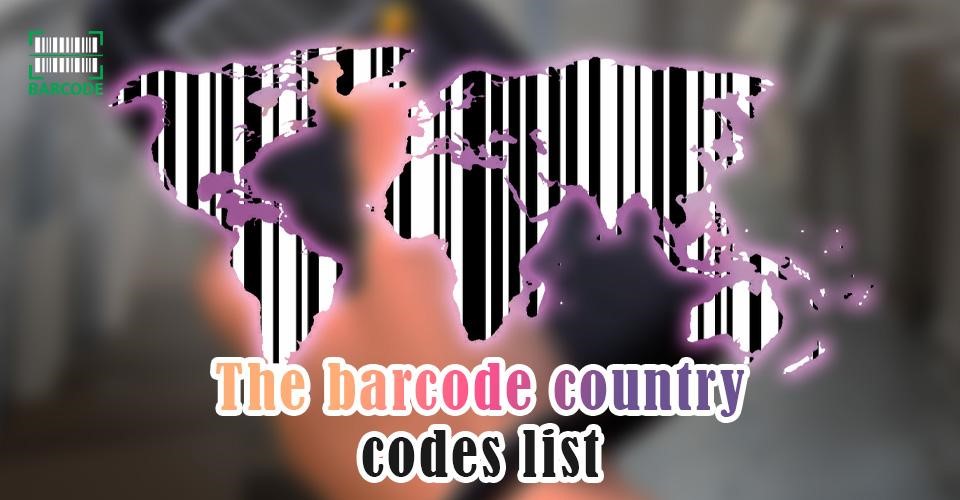
The barcode country codes list
What Types of Information Can You Find In Barcodes?
Barcodes can store a wide range of information types and quantities.
Some fundamental information included in a barcode are the product identity, weight, size, manufacturer identity, and of course—information about the facility where it was created.
Let’s have a closer look at what information two types of barcodes can hold: one-dimensional (1D) and two-dimensional (2D) barcodes.
1D barcode
Also known as linear barcodes, this barcode type is the most common one. It consists of a series of vertical lines and spaces of varying widths, which encode information.
The information encoded in 1D barcodes includes:
-
Product identification: such as their manufacturer, brand, and model number.
-
Inventory management: to track inventory levels and monitor stock movement.
-
Price information: allow for faster and more accurate checkout at retail stores.
-
Tracking information: used to track packages and shipments, allowing for real-time updates on their location and delivery status.
-
Serial numbers: used to uniquely identify a specific item or product.
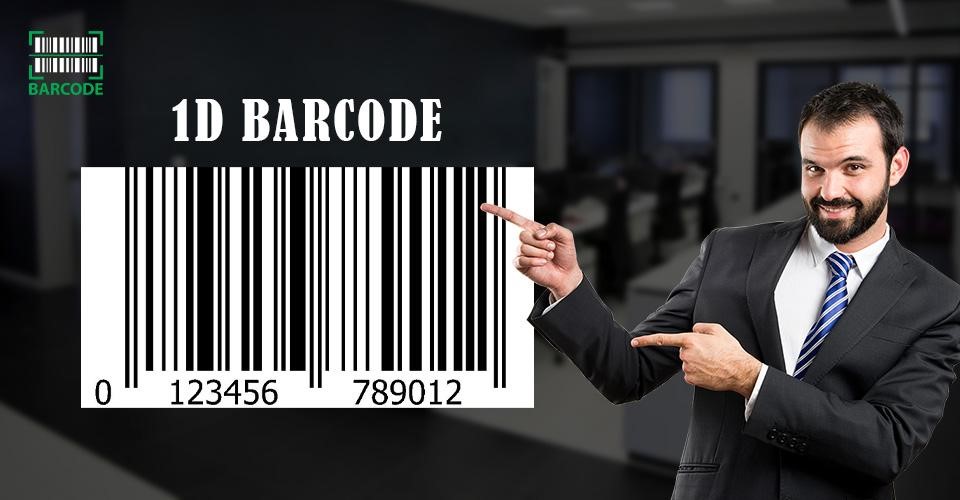
1D barcode
1D barcodes are primarily used for simple identification and tracking purposes, and are limited in the amount of information they can contain compared to more advanced barcode technologies like 2D barcodes.
Shop the best barcode readers to scan 1D barcodes now!
2D barcode
Commonly referred to as matrix codes, 2D barcodes are more intricate than 1D barcodes and have a far larger data storage capacity.
It allows users to amass up to 2,000 characters' worth of encoded data.
Data is encrypted both horizontally and vertically in 2D barcodes, allowing for more flexible application.

2D barcode
The uses of 2D barcodes are the same as those of 1D barcodes and more.
These types of barcodes can also be used for logistics, supply chain management, inventory tracking, sale registries, mobile marketing, and other purposes.
The ability to embed links or images within a 2D barcode that can be scanned using an image scanner is an additional benefit of 2D barcodes, like a smartphone's camera, and uploaded or viewed.
Check out some best 2D barcode scanners to check barcode country of origin:
What Are Barcode Country Code Prefixes?
Barcode prefix country is a series of numbers that are added to a barcode to identify what is the country of origin of a product.
These prefixes are used in conjunction with the product's unique identification number to create a globally recognized barcode that can be read by any barcode scanner.
Also, the prefix barcode provides important information about the product, including where it was manufactured and where it originated from.
This information is crucial for businesses and regulatory agencies to track products and ensure compliance with import/export regulations.
By using standardized country code prefixes, businesses can ensure that their products are accurately identified and tracked throughout the supply chain.
Besides, consumers can make informed decisions about the products they purchase based on their country of origin.
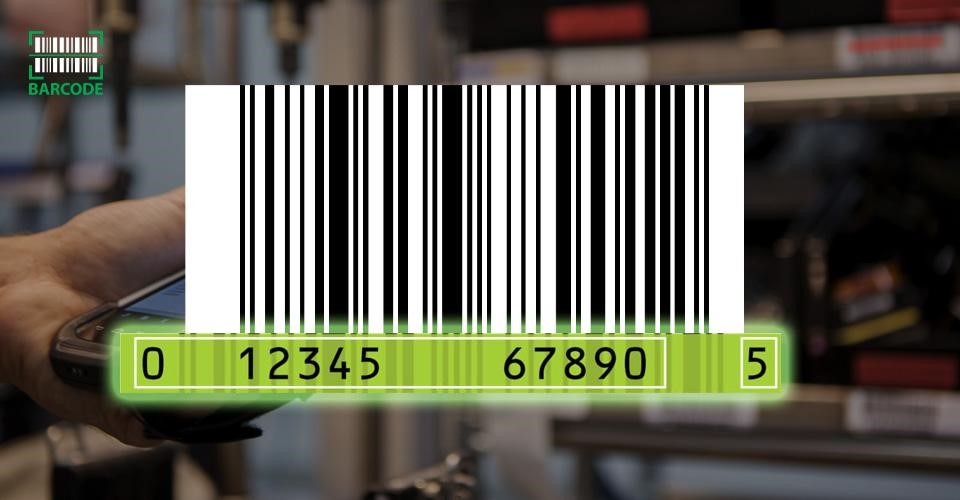
Barcode prefixes
The barcode numbers that start with a certain country code are either those that are directly issued by GS1 in that nation or those that are issued by an established standards body there.
The only legal way to begin using these allocated country codes in nations where GS1 is present is to join GS1.
This entails filling out their membership paperwork and paying a joining fee and annual membership payments to GS1.
Is A Specific Country Code Required for Barcodes?
No, they don't.
There are seldom any limitations depending on the country of origin anywhere in the world because all barcodes and barcode systems are created for international use.
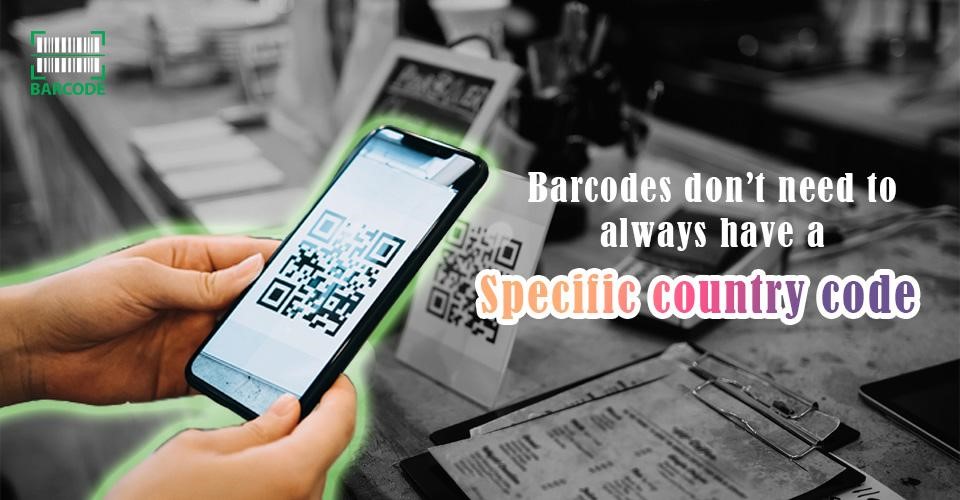
Barcodes don’t need to always have a specific country code
A common misconception is that the first few digits of the barcode numbers indicate the product's country of origin.
The barcode number, however, contains nothing precise regarding the product's country of origin.
These initial digits solely display the nation of origin of the actual barcode number.
Hence, in actuality, any barcode number can be printed on products that originate from any country.
Barcode Country of Origin List
After understanding the barcode country of origin, here is a barcode country list used by GS1 to help you perform a barcode prefix lookup easily.
You can use it as a barcode country finder as well!
|
Code |
Country |
Code |
Country |
|
000 - 019 |
United States and Canada |
020 - 029 |
Used to issue restricted circulation numbers within a geographic region |
|
030 - 039 |
United States drugs |
040 - 049 |
Used to issue restricted circulation numbers within a company |
|
050 - 059 |
Reserved for future use |
060 - 099 |
United States and Canada |
|
100 - 139 |
United States |
200 - 299 |
Used to issue GS1 restricted circulation number within a geographic region |
|
300 - 379 |
France and Monaco |
380 |
Bulgaria |
|
383 |
Slovenia |
385 |
Croatia |
|
387 |
Bosnia and Herzegovina |
389 |
Montenegro |
|
400 - 440 |
Germany |
450 -459 |
Japan |
|
460 - 469 |
Russia |
470 |
Kyrgyzstan |
|
471 |
Taiwan |
474 |
Estonia |
|
475 |
Latvia |
476 |
Azerbaijan |
|
477 |
Lithuania |
478 |
Uzbekistan |
|
479 |
Sri Lanka |
480 |
Philippines |
|
481 |
Belarus |
482 |
Ukraine |
|
483 |
Turkmenistan |
484 |
Moldova |
|
485 |
Armenia |
486 |
Georgia |
|
487 |
Kazakhstan |
488 |
Tajikistan |
|
489 |
Hong Kong |
490 - 499 |
Japan |
|
500 - 509 |
United Kingdom |
520 - 521 |
Greece |
|
528 |
Lebanon |
529 |
Cyprus |
|
530 |
Albania |
531 |
North Macedonia |
|
535 |
Malta |
539 |
Ireland |
|
540 - 549 |
Belgium and Luxembourg |
560 |
Portugal |
|
569 |
Iceland |
570 - 579 |
Denmark, Faroe Islands and Greenland |
|
590 |
Poland |
594 |
Romania |
|
599 |
Hungary |
600 - 601 |
South Africa |
|
603 |
Ghana |
604 |
Senegal |
|
607 |
Oman |
608 |
Bahrain |
|
609 |
Mauritius |
611 |
Morocco |
|
613 |
Algeria |
615 |
Nigeria |
|
616 |
Kenya |
617 |
Cameroon |
|
618 |
Ivory Coast |
619 |
Tunisia |
|
620 |
Tanzania |
621 |
Syria |
|
622 |
Egypt |
623 |
Brunei |
|
624 |
Libya |
625 |
Jordan |
|
626 |
Iran |
627 |
Kuwait |
|
628 |
Saudi Arabia |
629 |
United Arab Emirates |
|
630 |
Qatar |
631 |
Namibia |
|
640 - 649 |
Finland |
690 - 699 |
China |
|
700 - 709 |
Norway |
729 |
Israel |
|
730 -739 |
Sweden |
740 |
Guatemala |
|
741 |
El Salvador |
742 |
Honduras |
|
743 |
Nicaragua |
744 |
Costa Rica |
|
745 |
Panama |
746 |
Dominican Republic |
|
750 |
Mexico |
754 - 755 |
Canada |
|
759 |
Venezuela |
760 - 769 |
Switzerland and Liechtenstein |
|
770 - 771 |
Colombia |
773 |
Uruguay |
|
775 |
Peru |
777 |
Argentina |
|
780 |
Chile |
784 |
Paraguay |
|
786 |
Ecuador |
789 - 790 |
Brazil |
|
800 - 839 |
Italy, San Marino and Vatican City |
840 - 849 |
Spain and Andorra |
|
850 |
Cuba |
858 |
Slovakia |
|
859 |
Czech Republic |
860 |
Serbia |
|
865 |
Mongolia |
867 |
North Korea |
|
868 - 869 |
Turkey |
870 - 879 |
Netherlands |
|
880 |
South Korea |
883 |
Myanmar |
|
884 |
Cambodia |
885 |
Thailand |
|
888 |
Singapore |
890 |
India |
|
893 |
Vietnam |
896 |
Pakistan |
|
899 |
Indonesia |
900 - 919 |
Austria |
|
930 - 939 |
Australia |
940 - 949 |
New Zealand |
|
950 |
GS1 Global Office: Special applications |
951 |
EPCglobal: Special applications |
|
955 |
Malaysia |
958 |
Macau |
|
960 - 969 |
GS1 Global Office: GTIN-8 allocations |
977 |
Serial publications (ISSN) |
|
978 - 979 |
Bookland (ISBN), 979 used for sheet music |
980 |
Refund receipts |
|
981 - 983 |
GS1 coupon identification for common currency areas |
990 - 999 |
GS1 coupon identification |
How To Register A Barcode Number?
To register your barcode number and product in your country, you will need to follow the registration process established by the relevant government agency or barcode registration authority.
The process for registering your barcode number and product will vary depending on the country in which you are seeking registration.
In general, the process will likely involve the following steps:
-
Step 1: Obtain a unique barcode number for your product
Before you can register your product, you will need to obtain a unique barcode number. You can do this by purchasing a barcode from a reputable barcode provider or by applying for a barcode number from a barcode registration authority.
-
Step 2: Identify the relevant government agency or barcode registration authority
You will need to identify the government agency or barcode registration authority responsible for barcode registration in your country.
-
Step 3: Submit your registration application
Once you have obtained your barcode number and identified the appropriate registration authority, you will need to submit your registration application.
This may involve providing information about your product, including its name, description, and intended use.
-
Step 4: Pay any applicable fees
Depending on the country and registration authority, you may need to pay a fee to register your barcode number and product.
-
Step 5: Wait for confirmation
After you have submitted your registration application and paid any applicable fees, you will need to wait for confirmation from the registration authority that your barcode number and product have been registered.
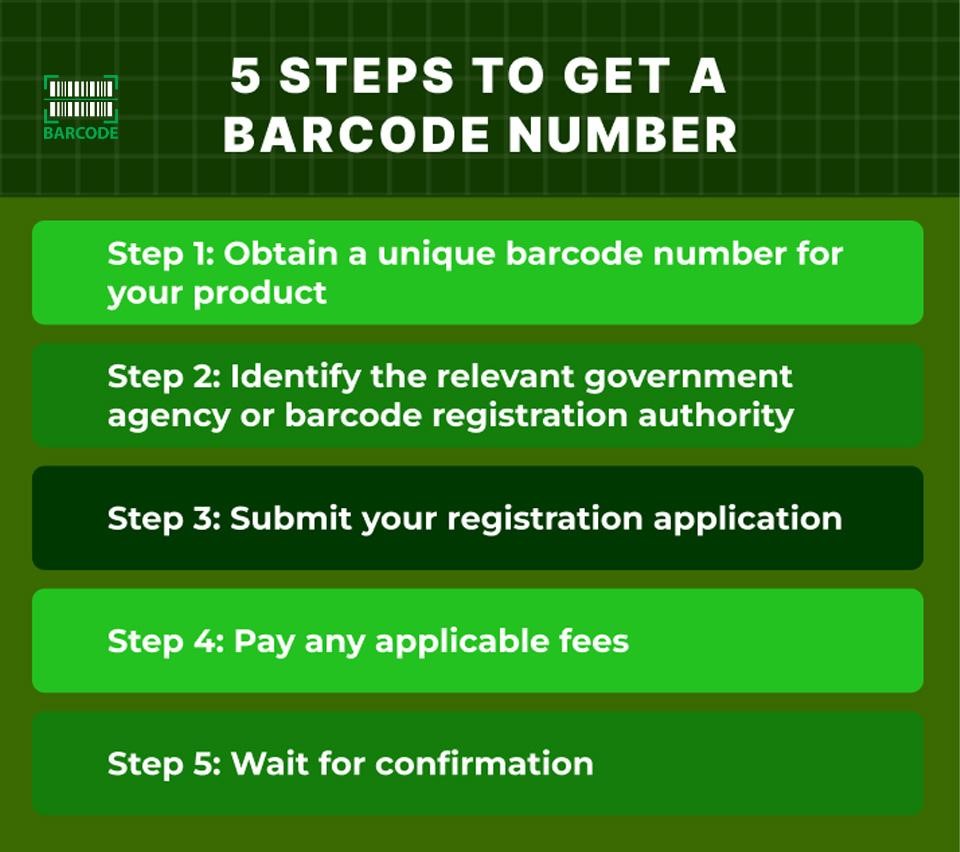
A guide to registering a barcode number?
By following these steps and complying with the relevant registration requirements, you can ensure that your barcode number and product are properly registered in your country.
Related post:
As you can see from the table above, the barcode prefix 502 is assigned to the United Kingdom.
To verify a product by barcode, you can use a barcode scanner or a mobile app that can read barcodes, like Barcode Live.
Simply scan the barcode using the scanner or app and check the information that appears, such as the product name, description, and country of origin, to ensure that it matches the product you are looking for.
Barcode prefix 886 is not assigned to a specific country or region.
Barcode prefix 450 - 450 and 490 - 499 are assigned to Japan.
Barcode prefix 460 - 469 are assigned to Russia.
Bottom Line
While the use of barcodes has become increasingly widespread, deciphering the meaning of barcode prefixes and numbers can be a complex process. By understanding how to interpret bar code country of origin information, businesses and consumers can ensure that the products they purchase meet their needs and expectations. And the barcode country of origin list is important to navigate the complex world of barcode systems so that users can make informed decisions about the products they buy.
![Barcode Sizes Explained & FAQs: An Ultimate Guide [The Latest]](https://barcodelive.org/filemanager/data-images/imgs/20221031/Barcode-Sizes-Tutorial_1.jpg)

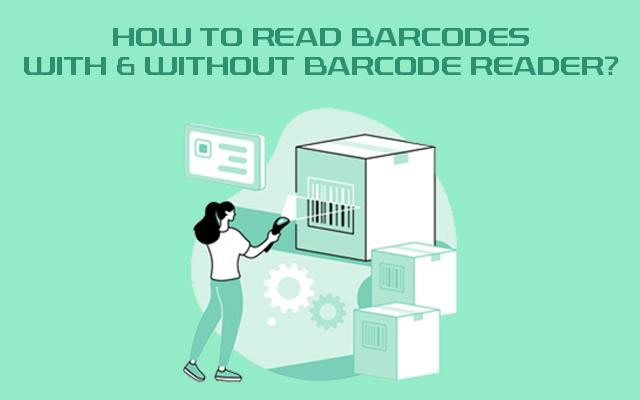


![2D Barcode Generator Explained: A Complete Guide [Disclosed]](https://barcodelive.org/filemanager/data-images/imgs/20221114/2D-Barcode-Generator.jpg)
5 Comments
Akhil Jugran
if the country of manufacture is not stated in a barcode, then how can I find out? is the country of origin then the country of manufacture??
Leave a Comment
Your email address will not be published. Required fields are marked *Oliver Collins
I like the idea, smart, and interesting
Leave a Comment
Your email address will not be published. Required fields are marked *Barcodelive
Thank you
Leave a Comment
Your email address will not be published. Required fields are marked *Ethan Clark
How can I find an ingredients listing for food products (ideally in the UK/Europe) by barcode? Are there any open databases?
Leave a Comment
Your email address will not be published. Required fields are marked *Barcodelive
As a general rule, barcode does not encode ingredients. It is used for product identification in the manufacture, storage, shipping, and retailing of products.
Leave a Comment
Your email address will not be published. Required fields are marked *Leave a Comment
Your email address will not be published. Required fields are marked *